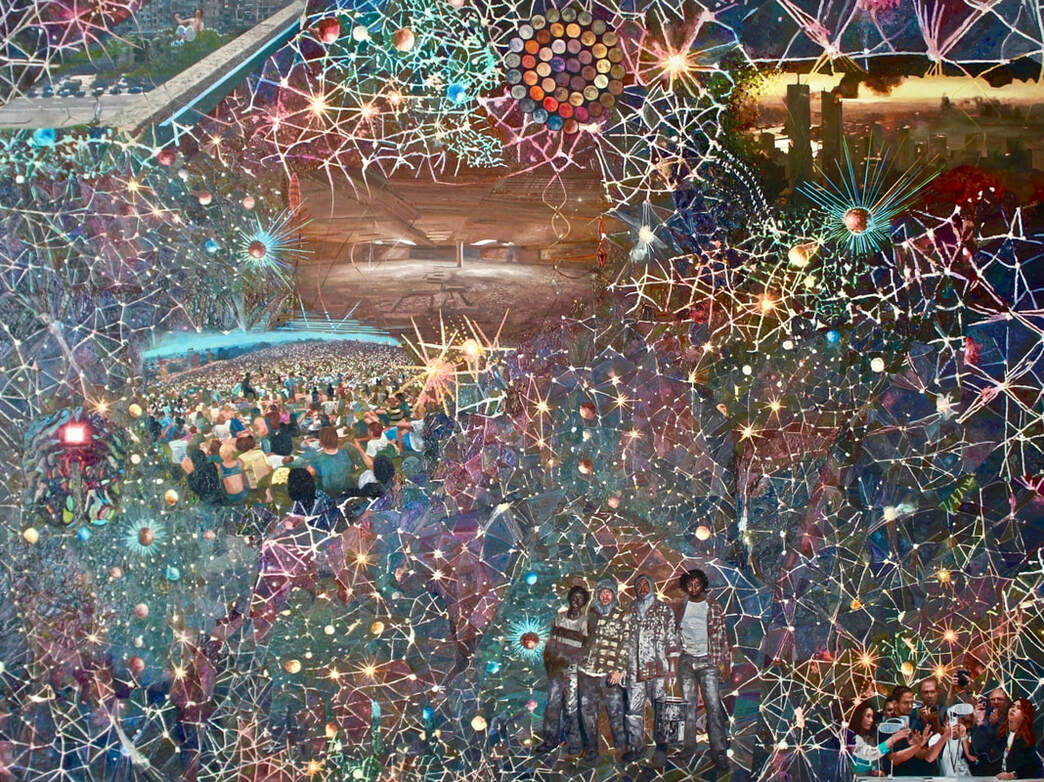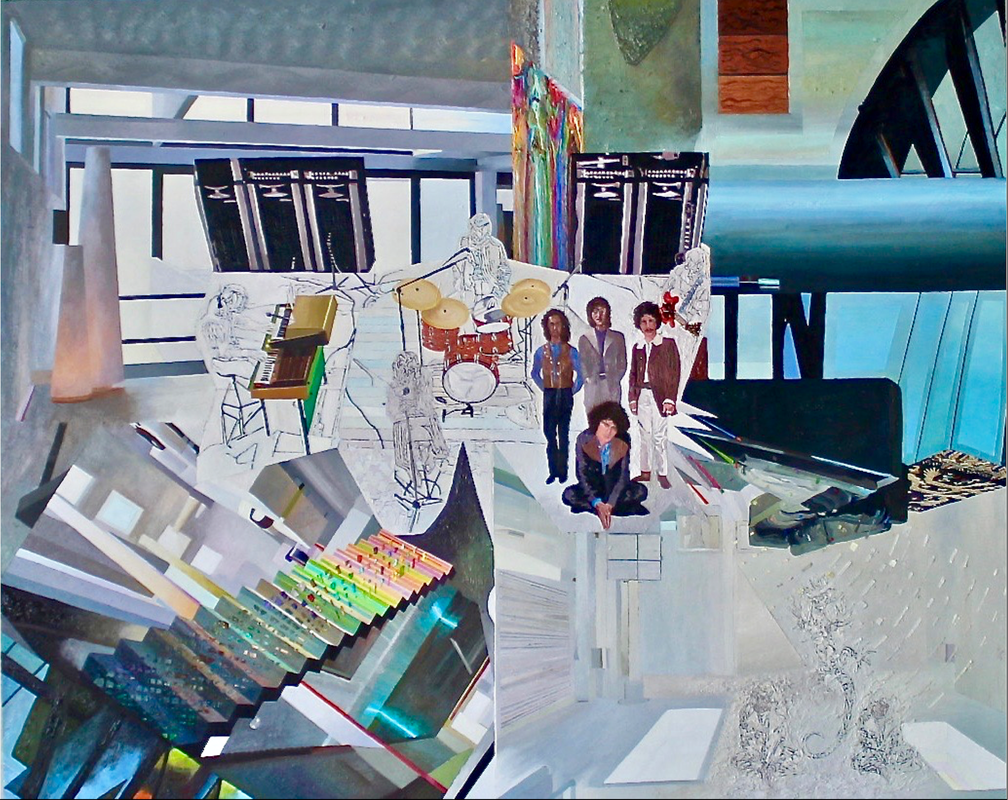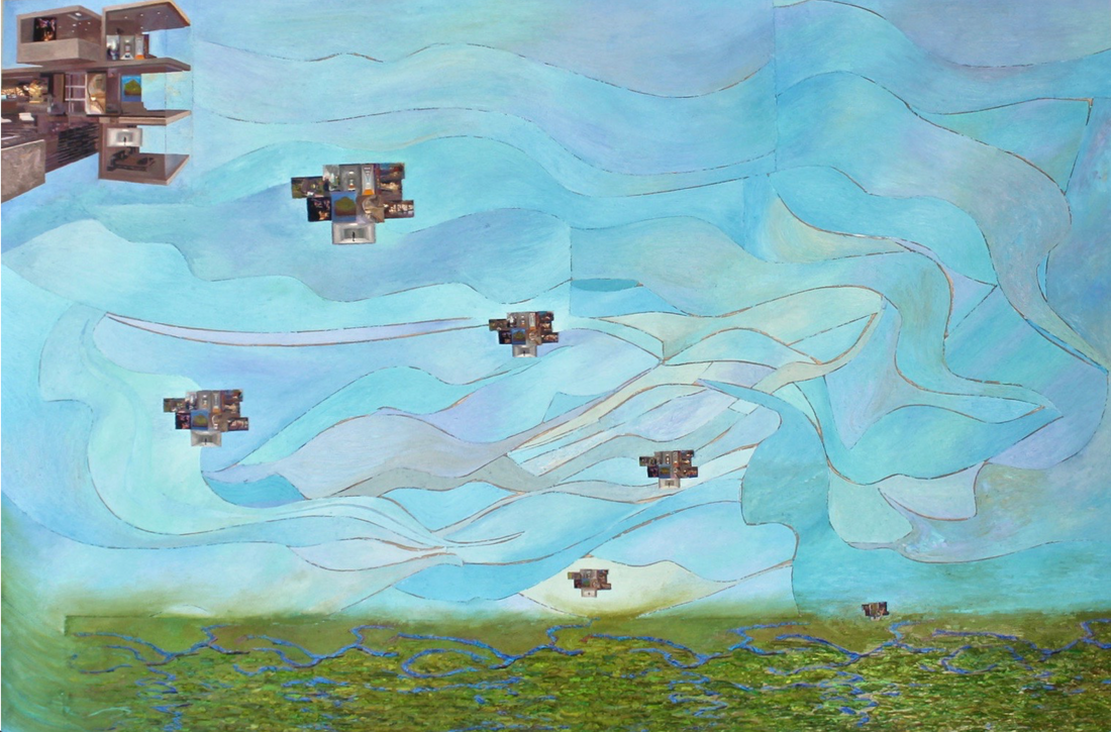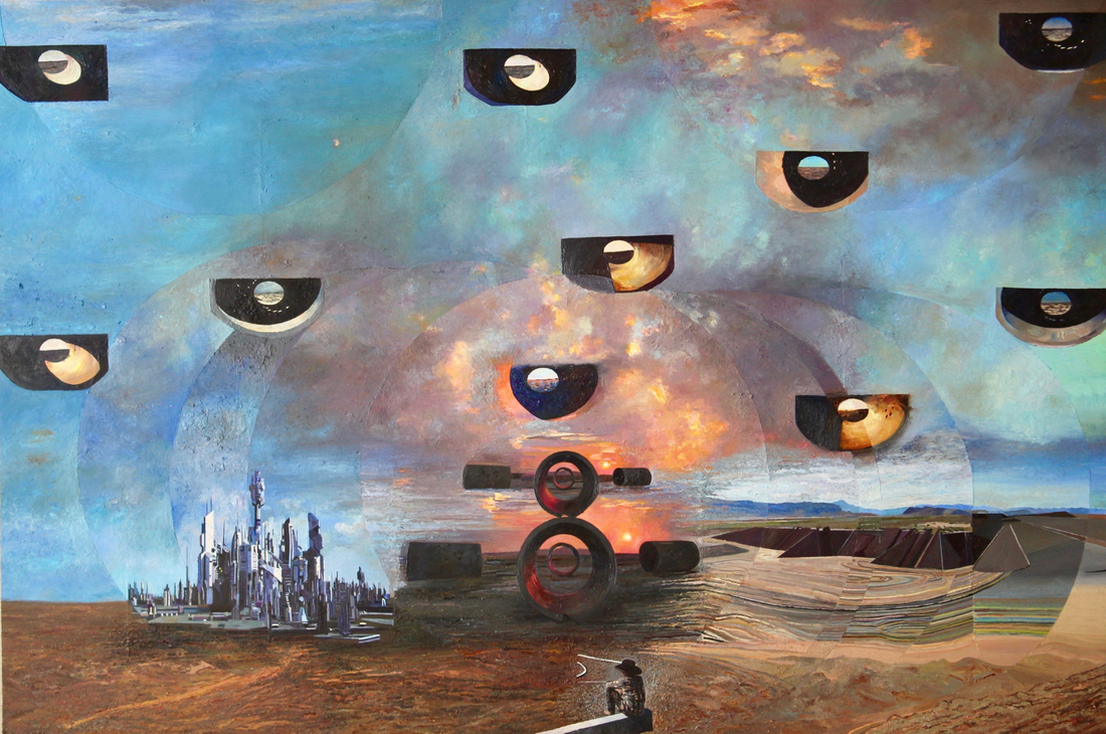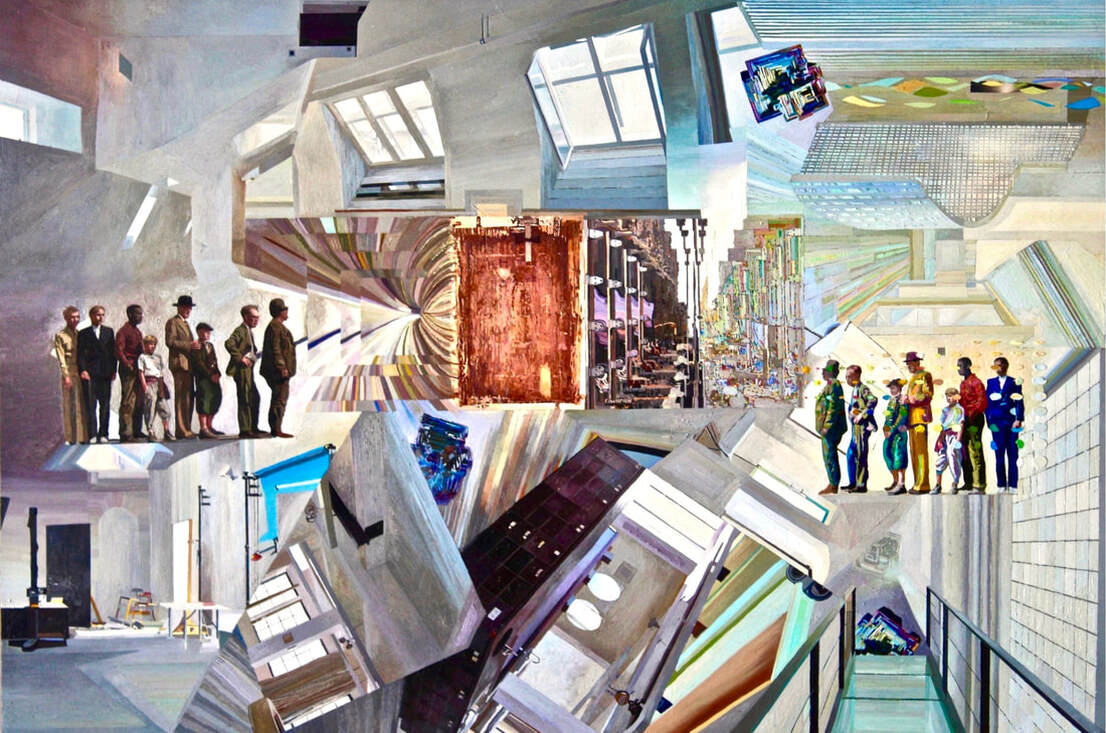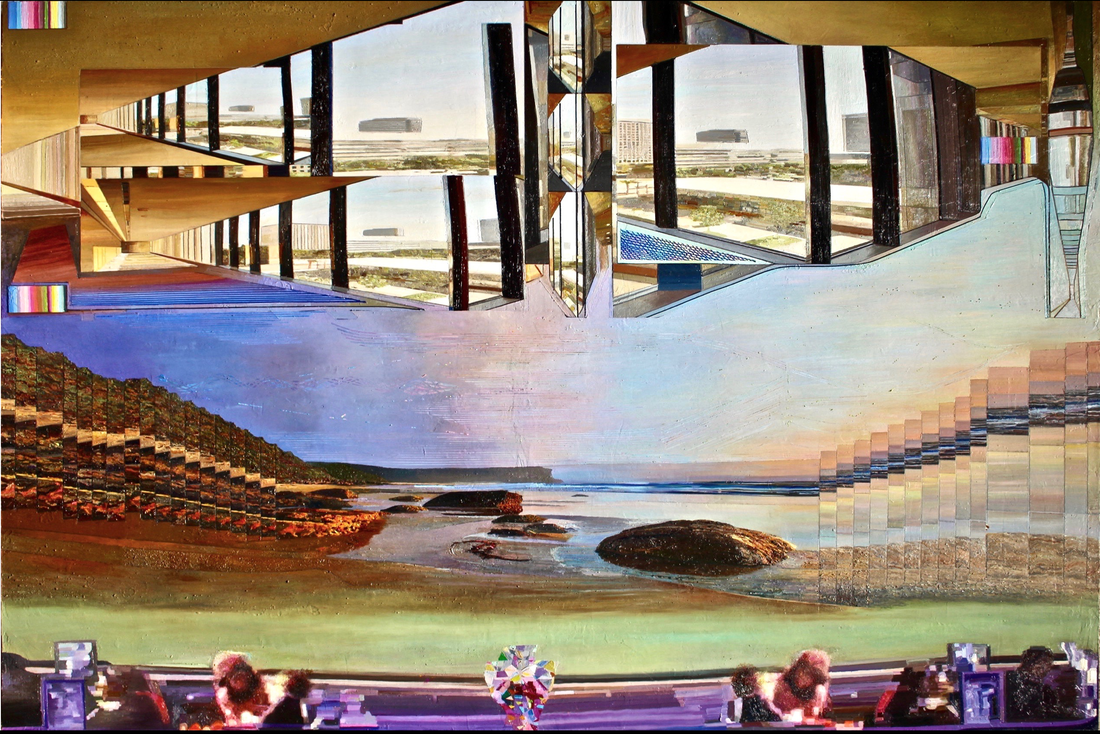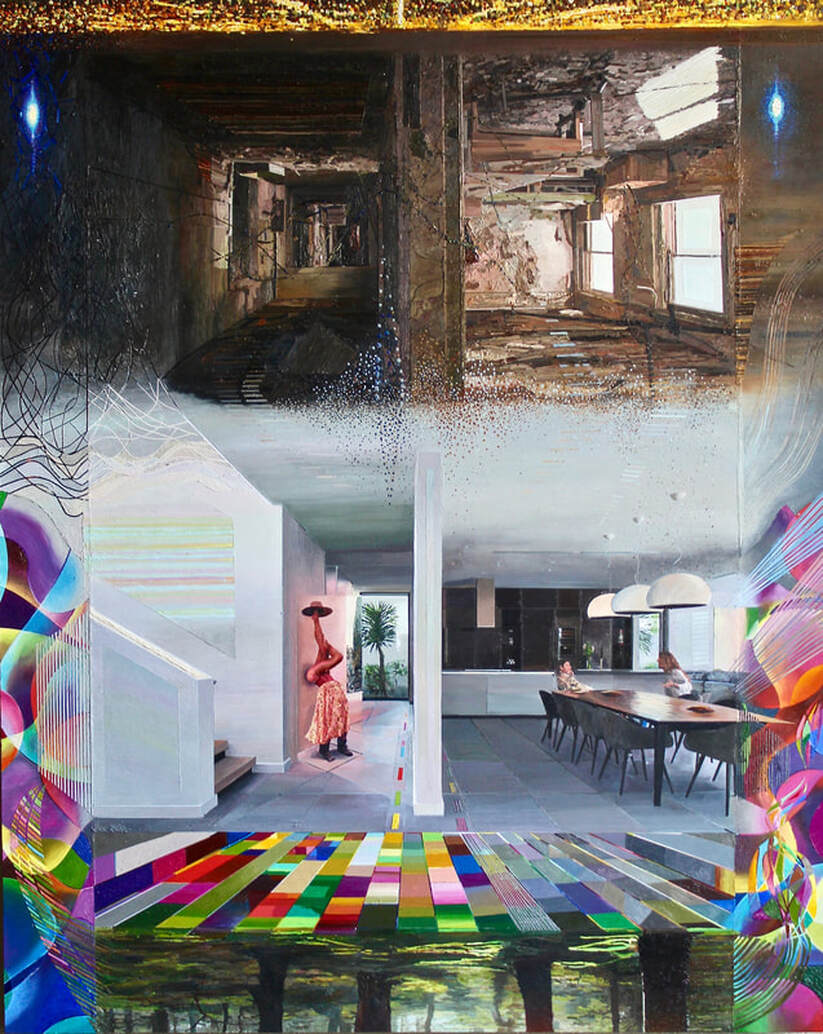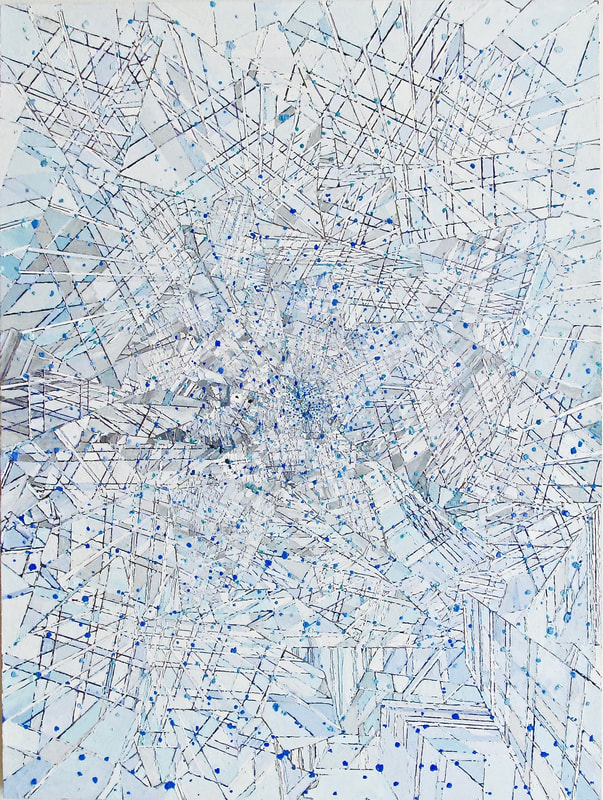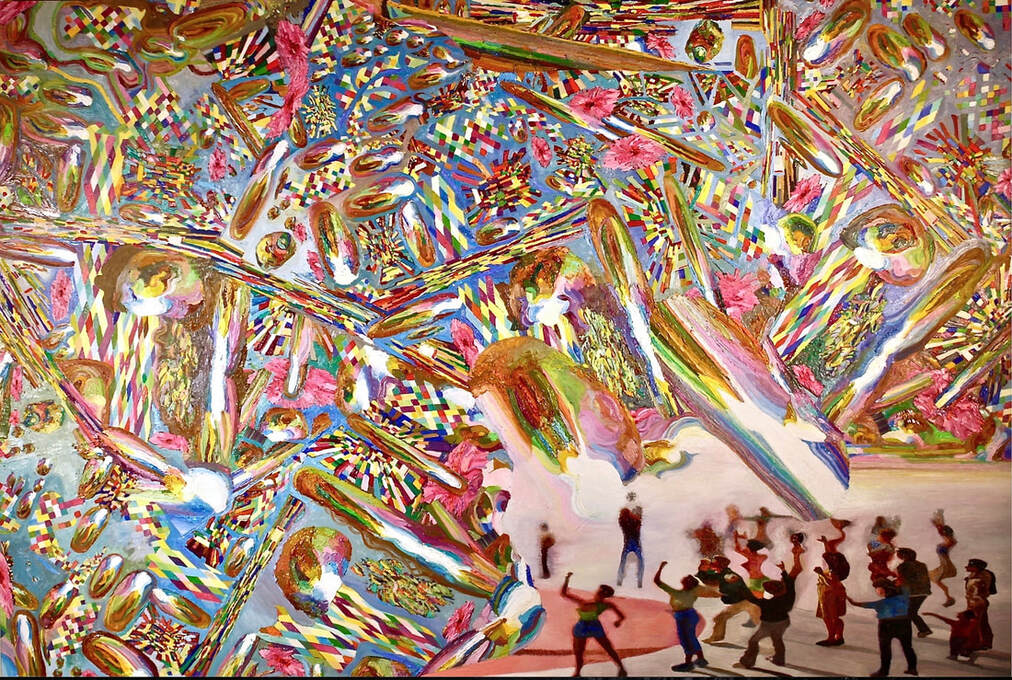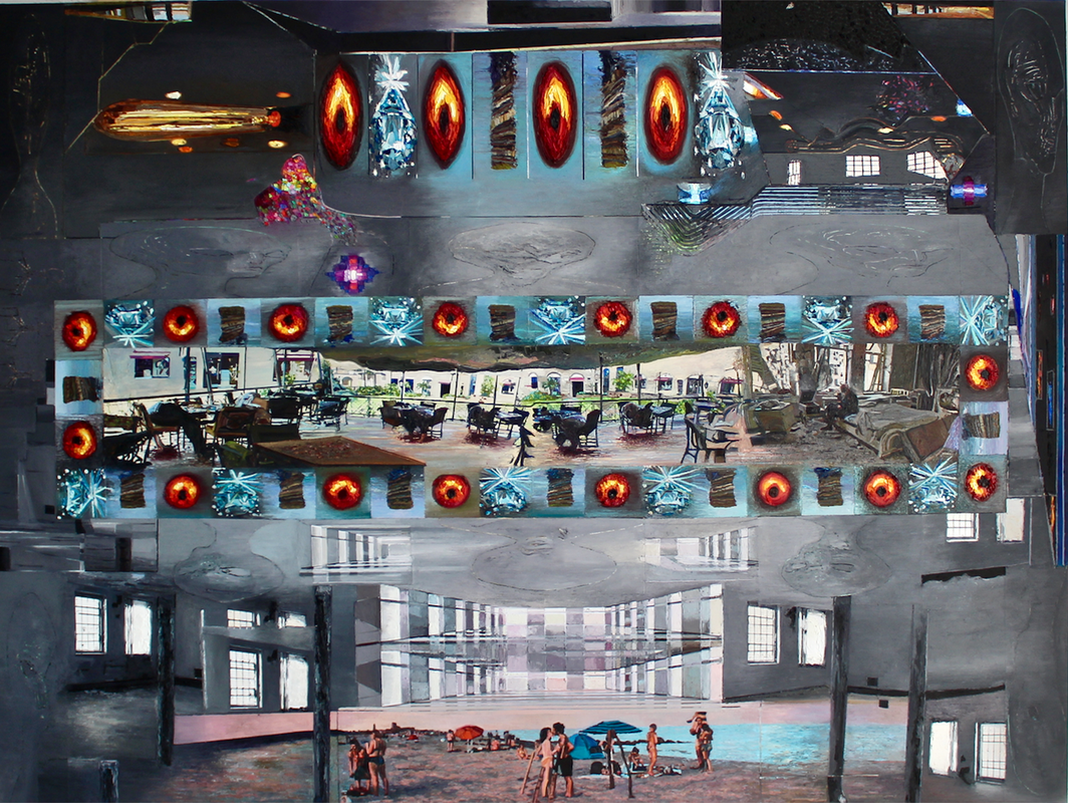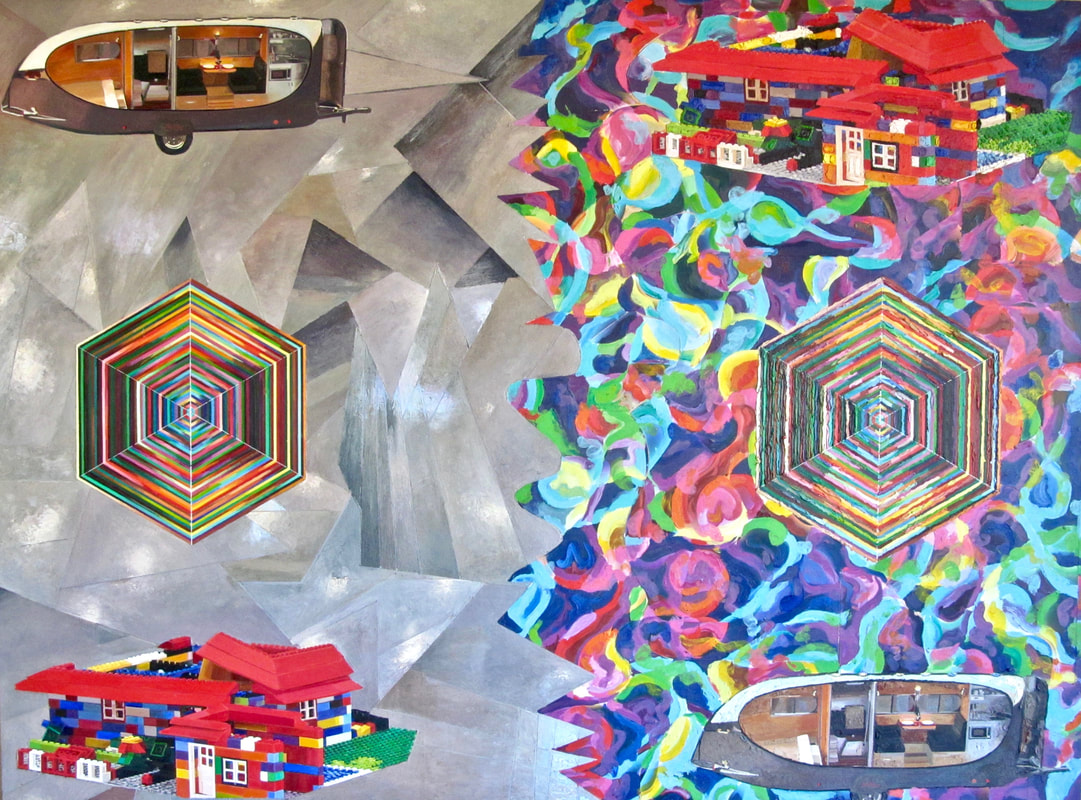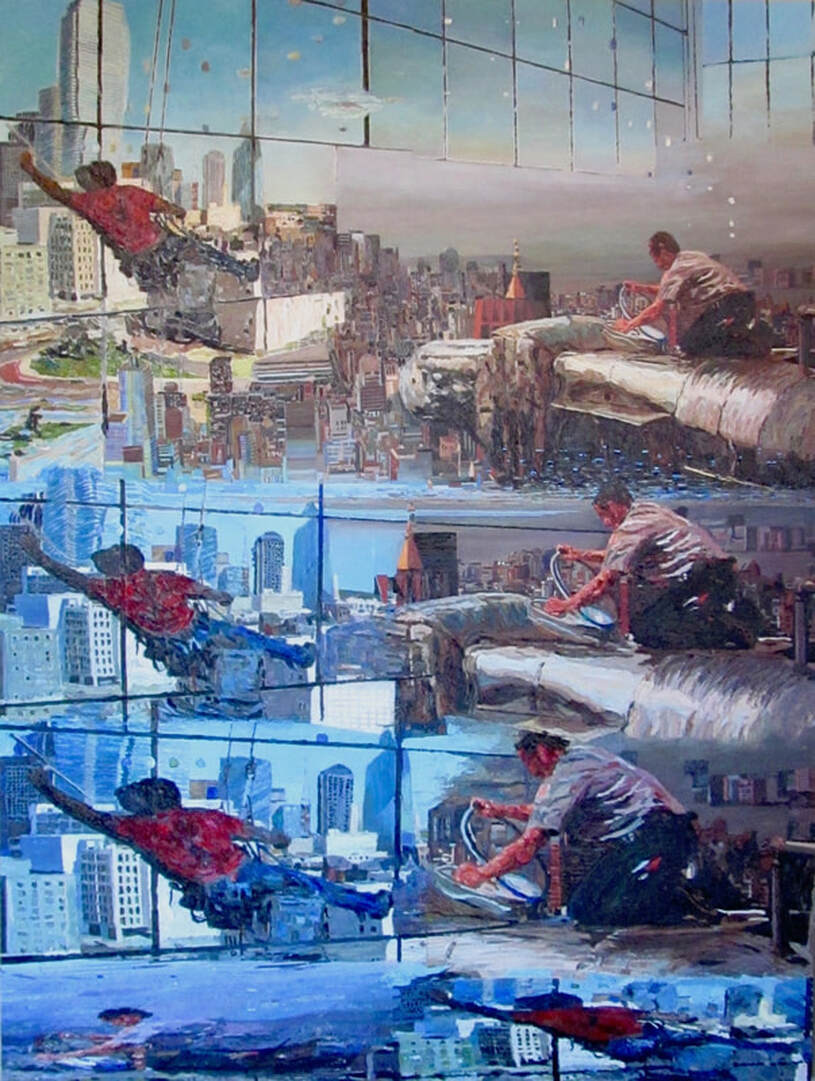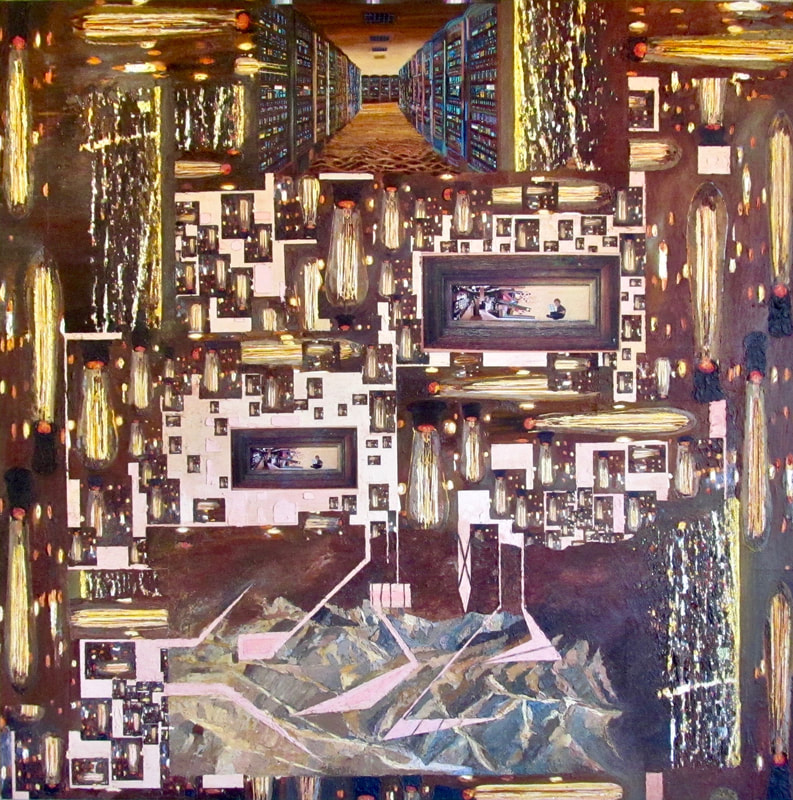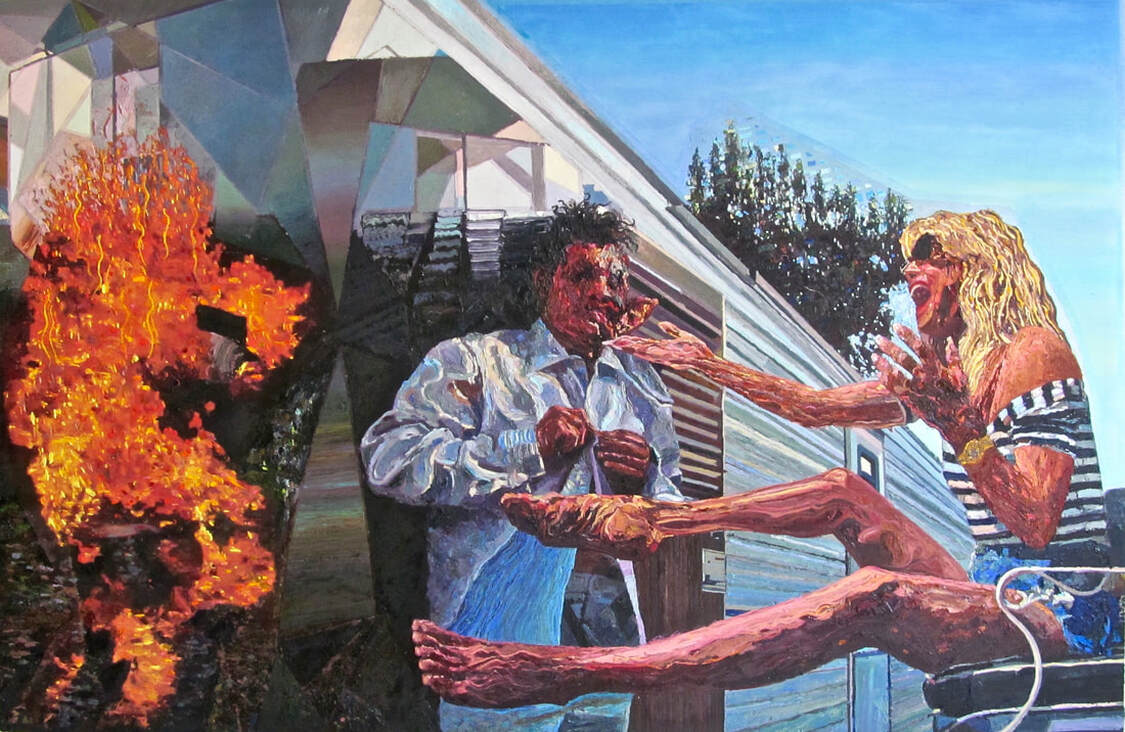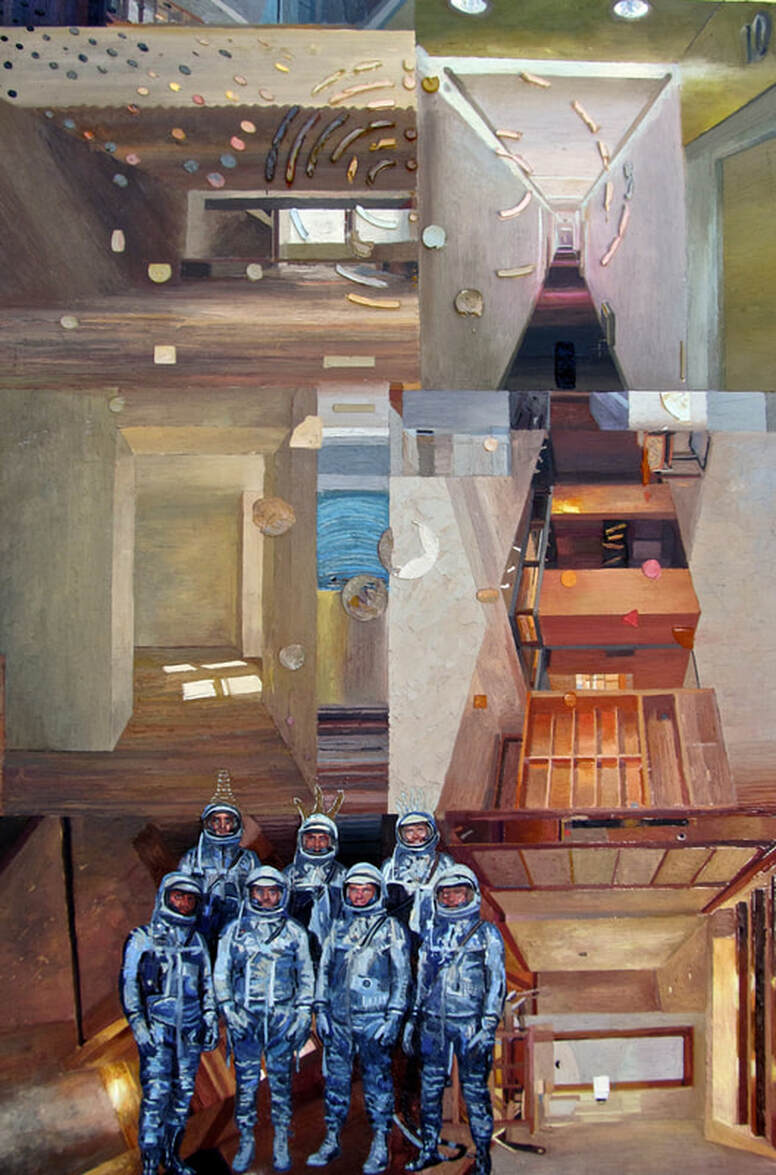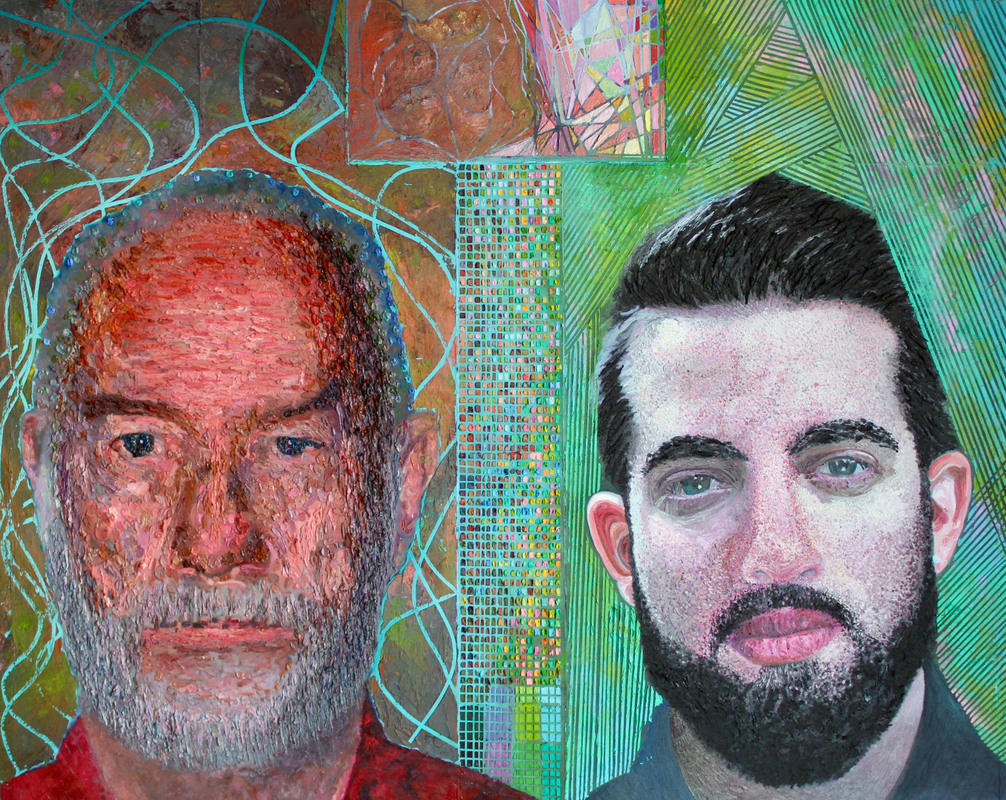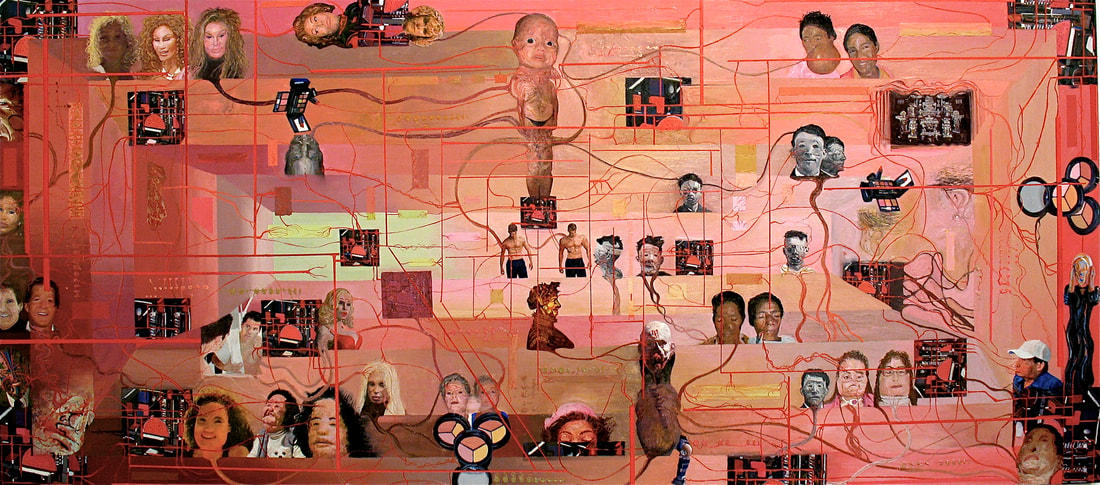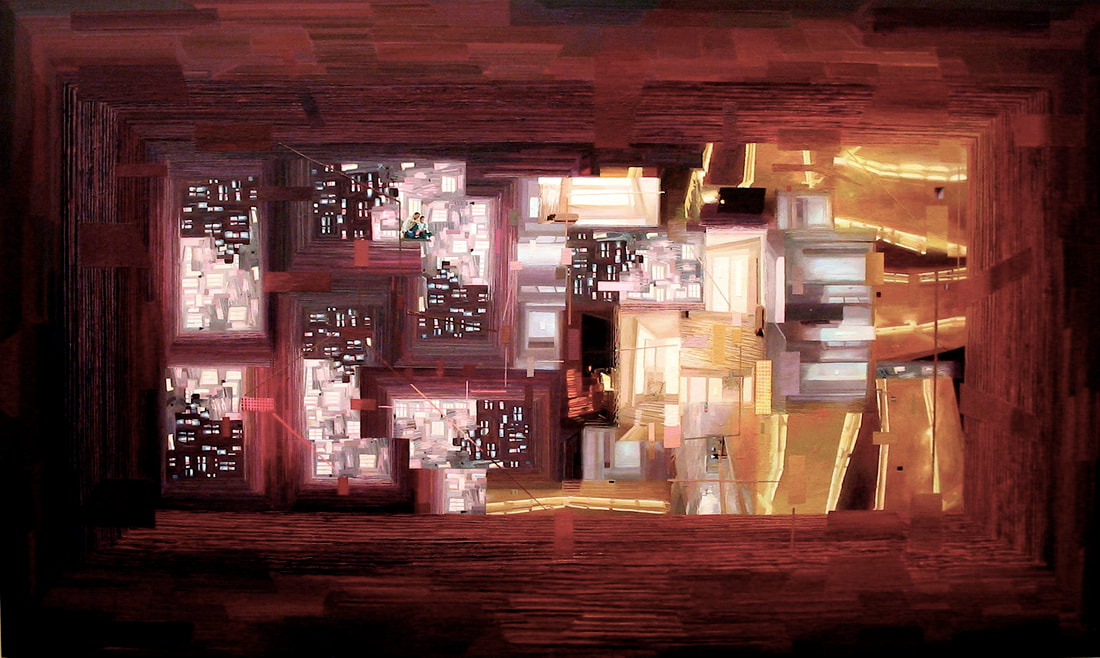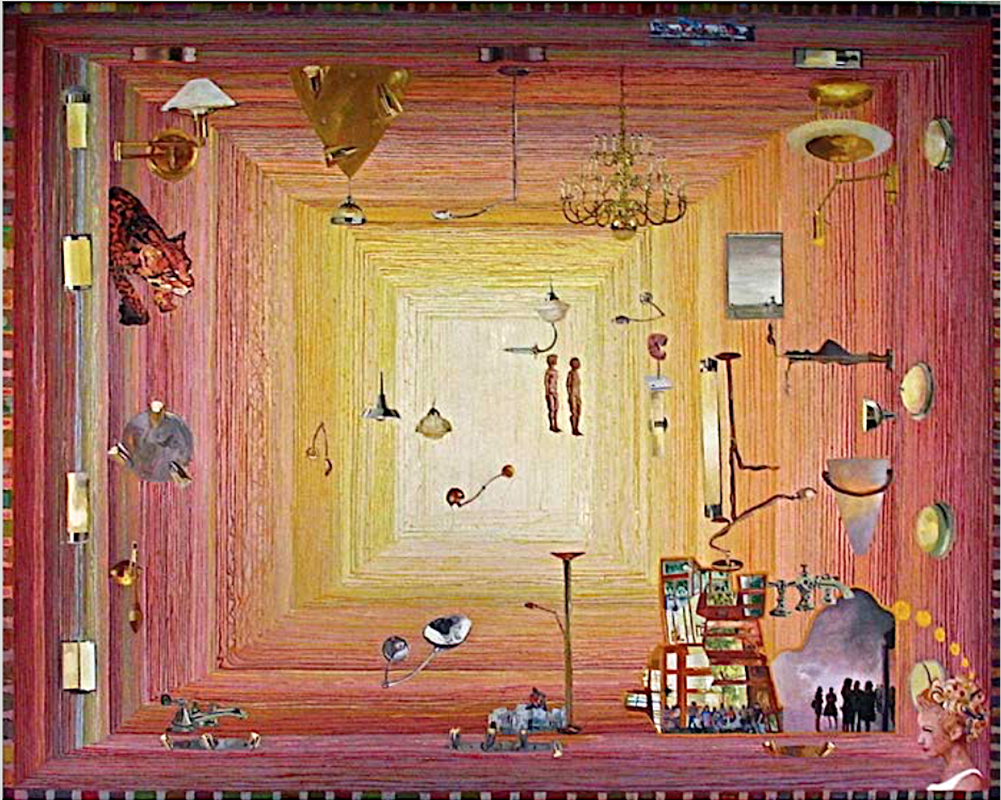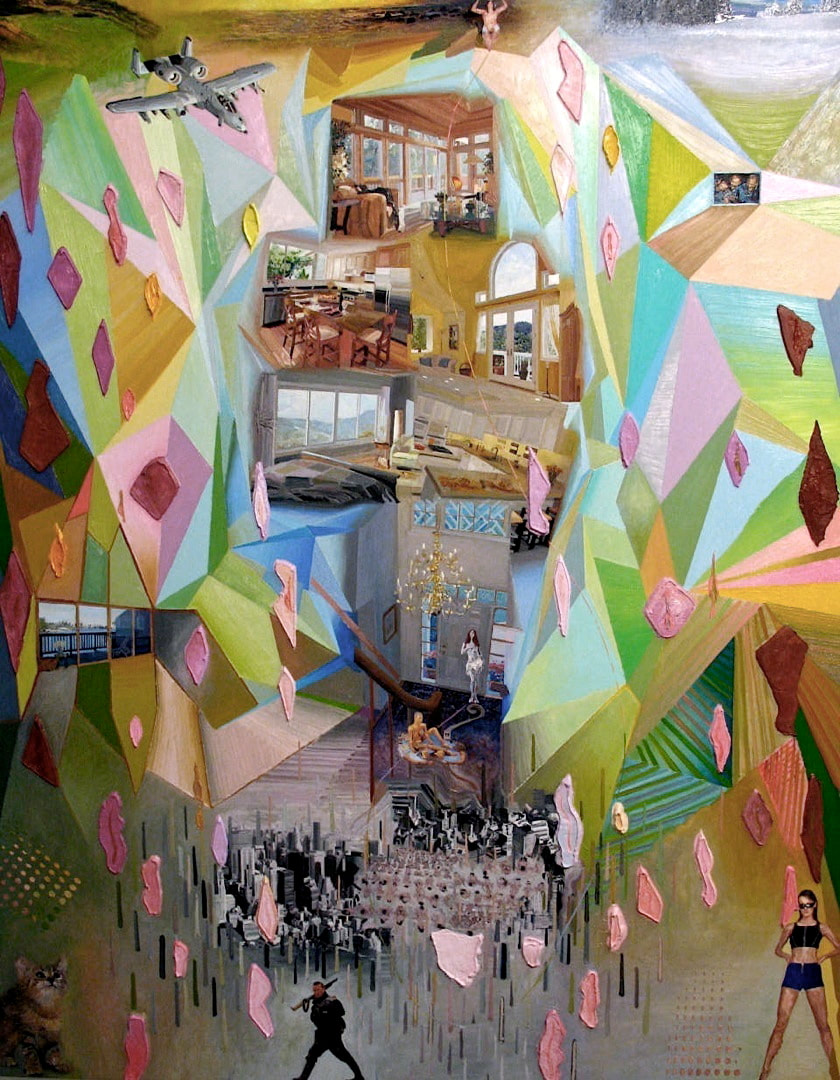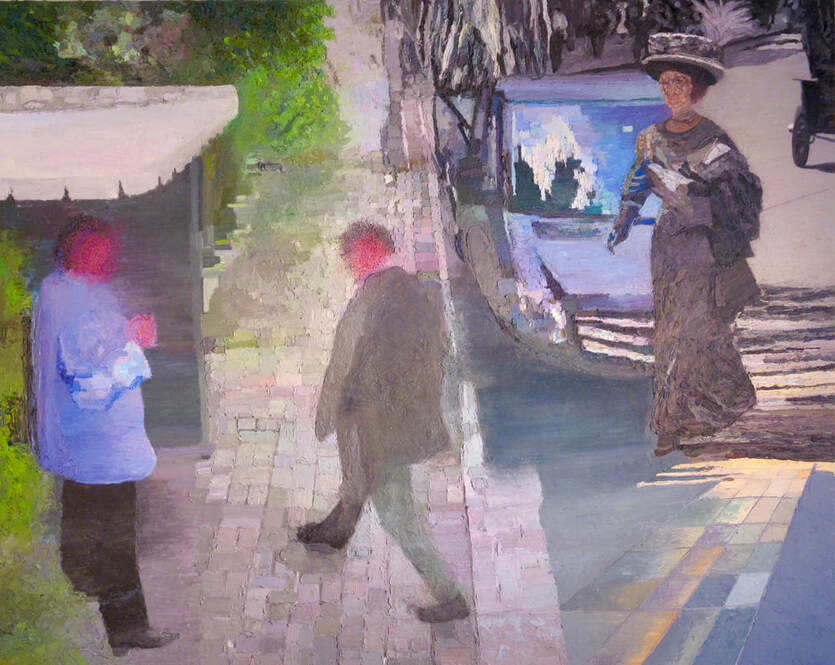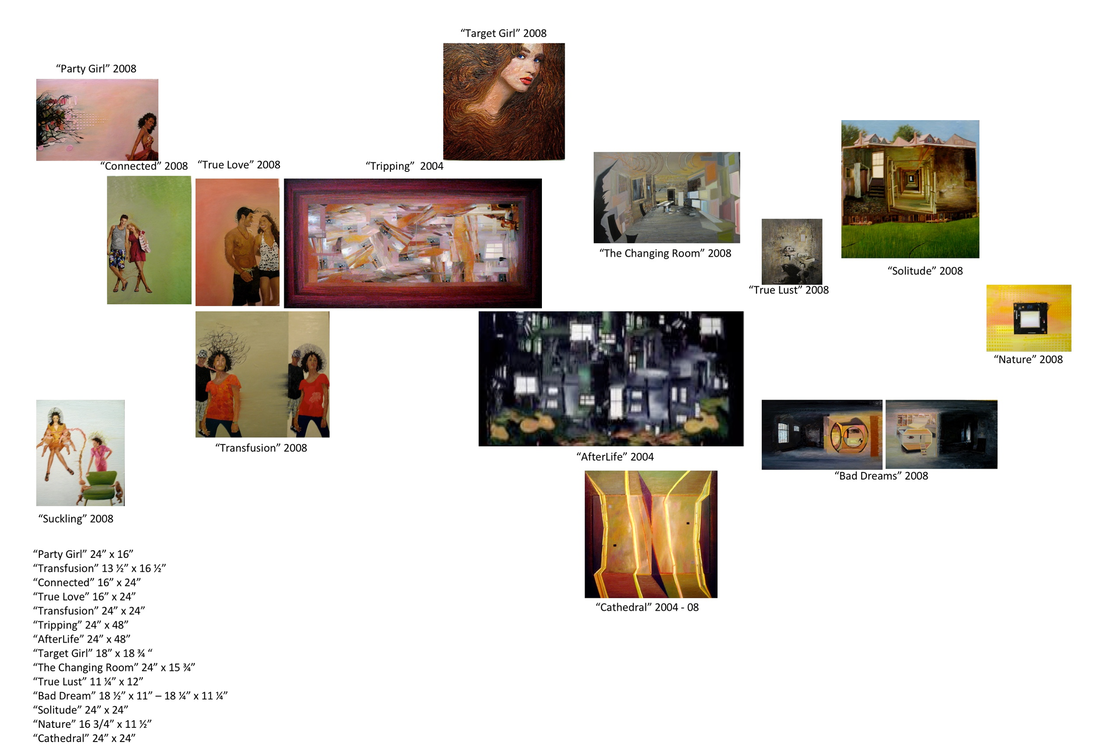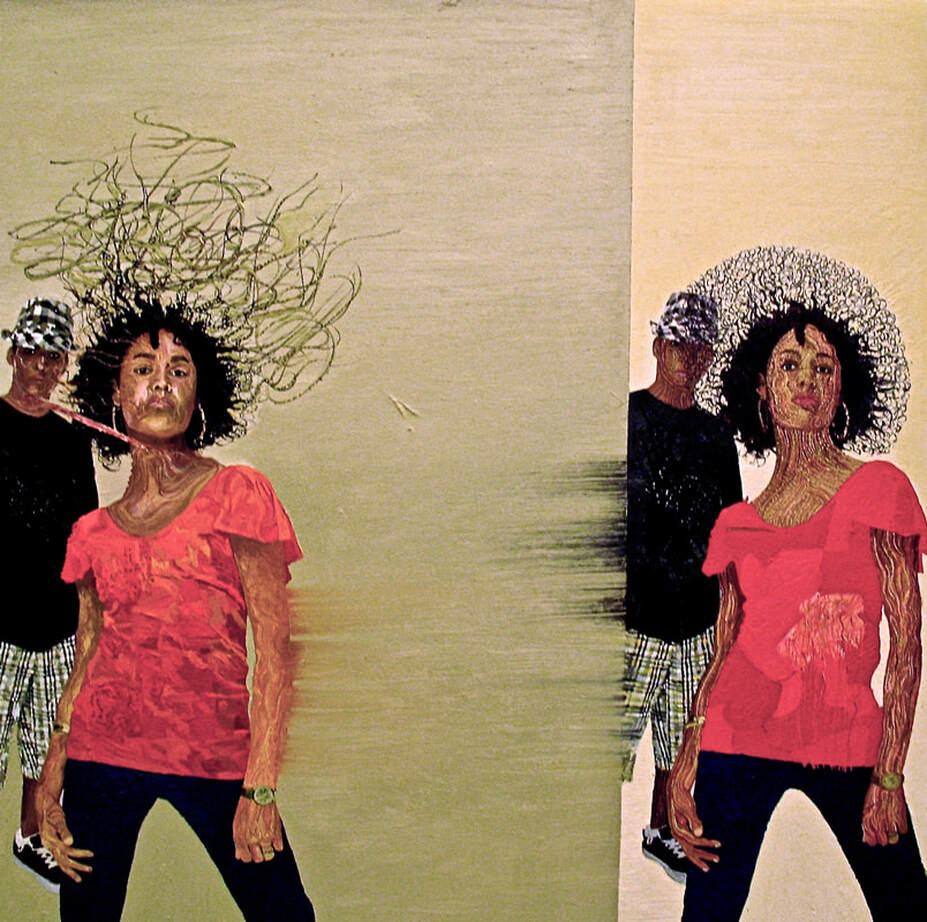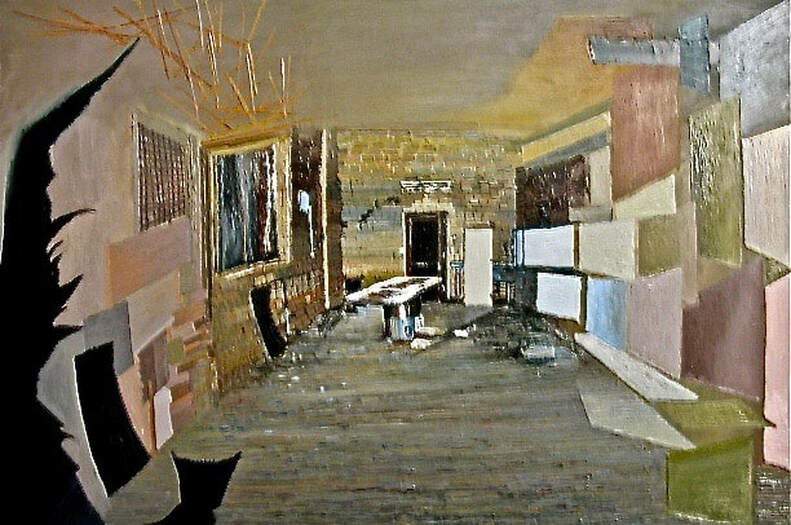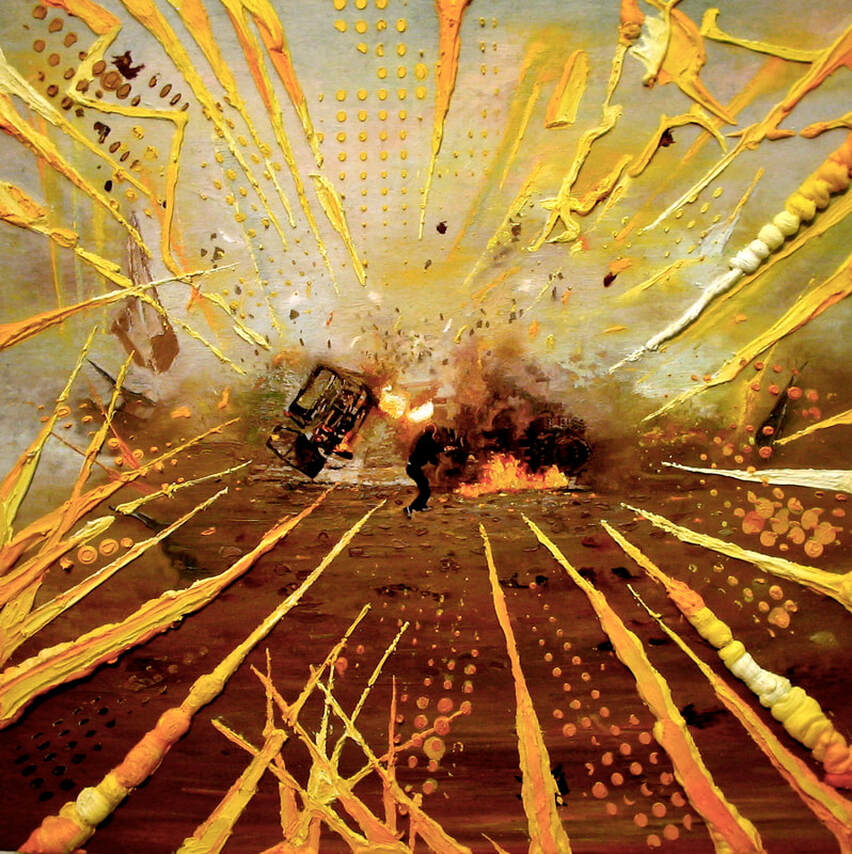I investigate the relationship between painting and photography, making paintings that engage photography as a sometimes overt, but mostly painted element. Since the photography literally exists beneath the painting’s surface, there is a strange conceptual ambiguity, relational to the frozen moment of a person, place, or thing that lie underneath the interpretive nature of the painting process on top. Collage has a "time machine" aspect, which I mine to establish lines of conceptual meaning. The content of my work focuses on conceptions of transcendence, moments in popular culture, and sharable life realities. I consider my paintings to be open, investigative narratives. My hope is to provoke a sense of curiosity within the viewer, similar to the curiosity I feel when making a painting. I strive to make a painting that has visual and perceptual engagement.
A. "Frozen" 40" x 30" Oil/Paper/Panel 2024
AB. "Yesterday and Tomorrow" 30" x 40" Oil/Paper/Panel 2024
C."Illusions/Reflections 24" x 36" Oil/Paper/Panel 2023
D. "The Bridge between Loneliness and Solitude" 24" x 36" Oil/Paper/Panel 2023
E. "Eternally Present" 24" x 30" Oil/Paper/Panel 2023
F. “The Infinite Grind” 24” x 36” Oil/Paper/Ballpoint Pen/ Panel 2023
G. "The Core" 30" x 24" Oil/Paper/Panel 2023
H. "People Are Strange" 24" x 30" 2023
I. "Meandering" 24" x 36" 2023
J. "Leslie" 24" x 36" Oil/Paper/Panel 2022
K. "Fear as a Conglomerative Pastiche" 24" x 36" Oil/Paper/Panel 2022
L. "The Poetics of Less is More" 24" x 36" Oil/Paper/Panel 2022
M. "Ambivalent Ideology" 24" x 30" Oil/Paper/Panel 2022
N. "Transfixed" 24" x 36" Oil/Paper/Panel 2022
O. "Encasement" 24" x 36" Oil/Paper/Panel 2022
P. "The Performance of a Lifetime" 24" x 30" Oil/Paper/Panel 2022
A.
Q. “This Can’t be Happening; It’s not Real.” 24” x 36” Oil/Paper/Panel. 2021
Q. “This Can’t be Happening; It’s not Real.” 24” x 36” Oil/Paper/Panel. 2021
R. "Backtracking" 24" x 36" Oil/Paper/Panel 2021
S. "Time Enough at Last" 24" x 30" Oil/Paper/Panel 2021
1. "Fabrication of an Illusion" 24" x 36" Oil/Paper/Panel 2021
2. "Painters of the Past 24" x 30" Oil/Paper/Panel 2020

